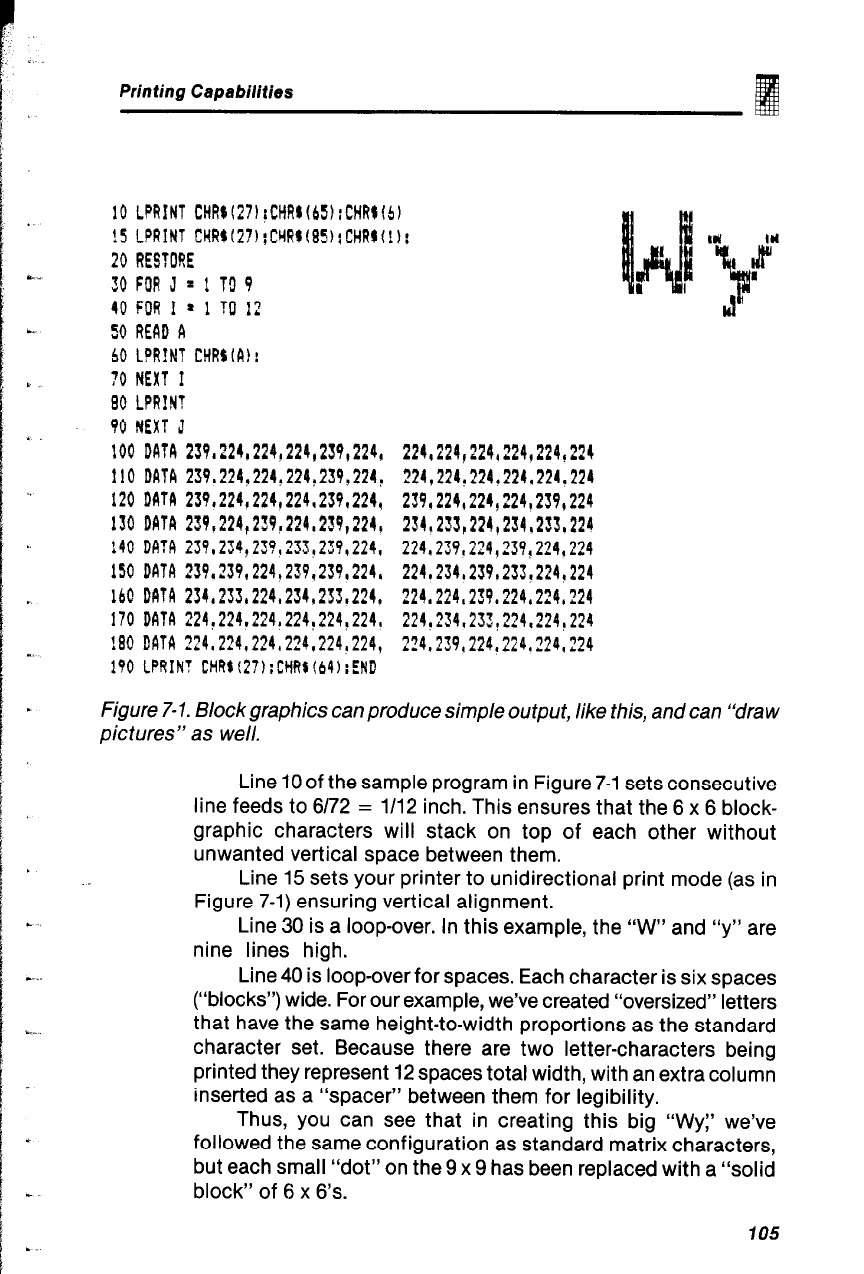
Printing Capabilities
10 LPRINT CHR((27)iCHRl(bS):CHR)fJ)
!5 LPRINT CHR$(27);CHR1(851:CHRJ(!):
20 RESTORE
30 FOR J * 1 TO 9
40 FOR f l 1 TO 12
50 REFlD R
50 L?R!NT CHRSi61:
70 NEXT I
80 LPRIN?
90 NEXT J
100 DATA 239,224,224,224,239,224, 224,224,224,224,224,22k
110 DRTA 239,224,224,224,239,224! 224,224!224,224,224,224
120 DATA 239,224,224,224,239,224, 239,224,224,224,239,224
130 DAM 239,224,2!9!224,239,224, 234,233,224,234,233,224
!40 Dh?P 239,234,23?,?33,239,224, 224,239,224,239,224,224
150 DATA 239,?39,224,239,239,224, 224,234,239,233,224,224
160 DATA 234,233,224,234,253,224, 224,224,239,224,224,224
170 DATA 224,224,224,224,224,224, 224,234,233,2?4,224,224
!80 DATA ?24,224,224,224,224,224, 2?4,239,224,224,224,224
190 LPRIM! CHRSI27l:CHRS(b4) :END
Figure 7-l. Block graphics can produce simple output, like this, and can “‘draw
pictures” as well.
Line 10 of the sample program in Figure 7-l sets consecutive
line feeds to 6172 = l/l2 inch. This ensures that the 6 x 6 block-
graphic characters will stack on top of each other without
unwanted vertical space between them.
Line 15 sets your printer to unidirectional print mode (as in
Figure 7-l) ensuring vertical alignment.
L
Line 30 is a loop-over. In this example, the “W” and “y” are
nine lines high.
. . . .-
L__
.+
c
Line 40 is loop-over for spaces. Each character is six spaces
(“blocks”) wide. For our example, we’ve created “oversized” letters
that have the same height-to-width proportions as the standard
character set. Because there are two letter-characters being
printed they represent 12 spaces total width, with an extra column
inserted as a “spacer” between them for legibility.
Thus, you can see that in creating this big “WY:’ we’ve
followed the same configuration as standard matrix characters,
but each small “dot” on the 9 x 9 has been replaced with a “solid
block” of 6 x 6’s.
105
L


















